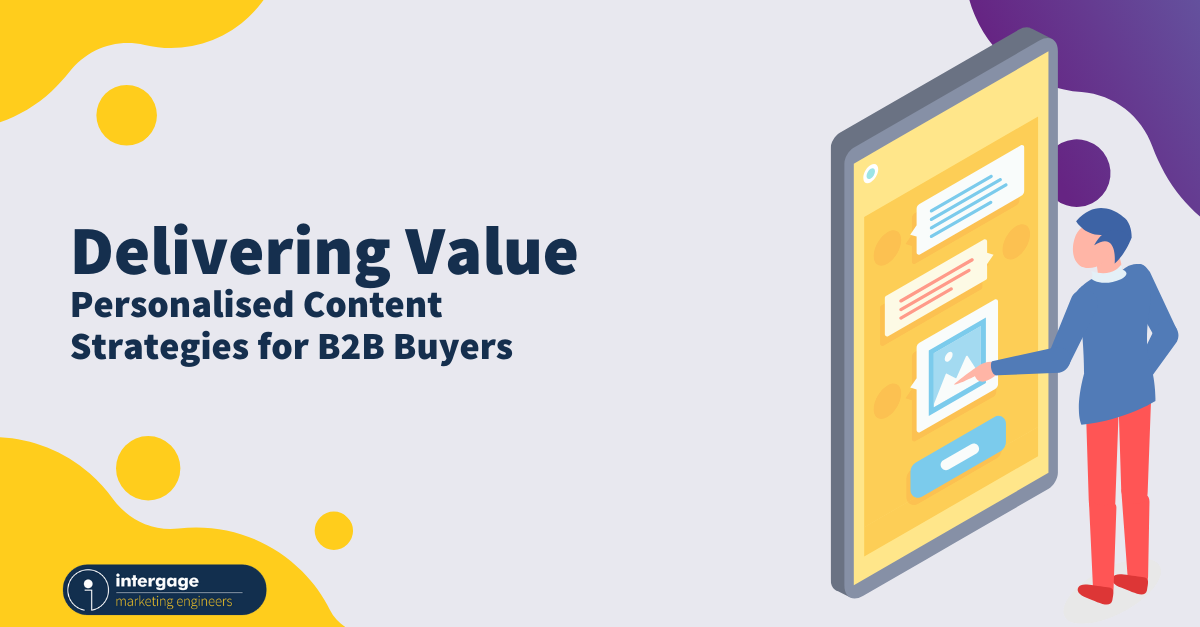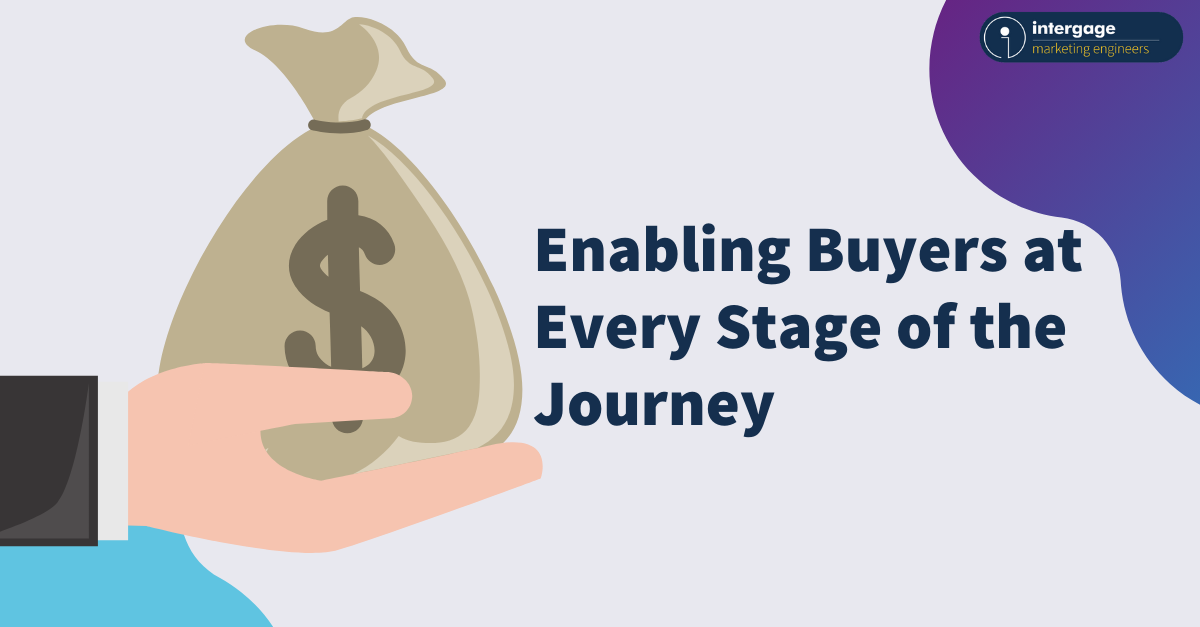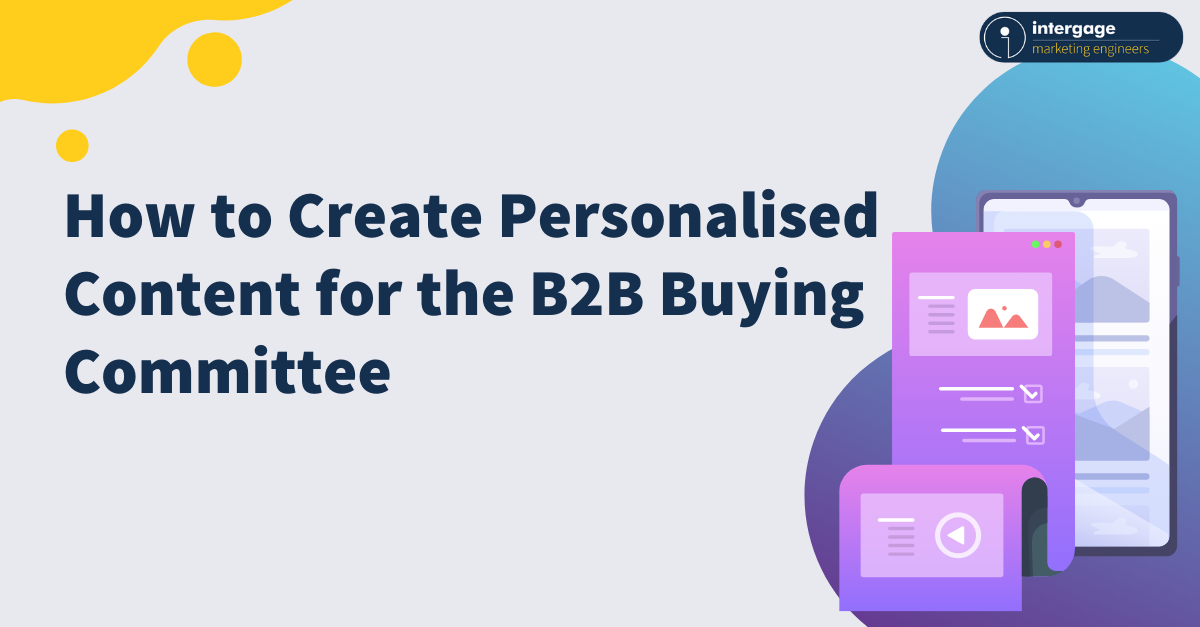The Power of Content for Buyer Enablement
Content is the linchpin that bridges the gap between sellers and buyers. It serves as the educational cornerstone of the modern sales process, enabling buyers to make informed decisions through their own research. With the help of the internet buyers can come to their own decisions, choosing which product they should be buying almost entirely independently—no ‘bowing down’ to salespeople trying to persuade them which way to fall. In fact, 67% of buyers prefer not to interact with a sales representative as their primary source of information (Mediafly).
In this guide, we'll delve deep into the intricate dance between content creation and buyer enablement, offering detailed insights, real-world examples, and actionable strategies.
The role of content in buyer enablement
At the heart of buyer enablement lies content, delivering useful information and insights to support buyers at each step of the buying journey. Throughout the buyer’s journey, its role changes throughout the buyers’ journey to accommodate buyers’ needs before, during, and after the sale, like so:
- Educator: Content educates buyers about industry trends, challenges, and potential solutions to their present problems.
- Guide: It guides buyers through the decision-making process, helping them evaluate options and make informed decisions.
- Influencer: Content can influence buyer perceptions and preferences, positioning your offerings as the best fit.
- Connector: It connects buyers with the information they seek, addressing their specific questions and concerns.
- Nurturer: Content nurtures relationships with buyers, ensuring engagement even after the purchase.
It’s important to under that, while content plays a pivotal role in buyer enablement, not all content is created equal. To maximise its impact, you must tailor your content to the unique needs and preferences of different buyer roles.
Tailoring content to buying jobs
Problem identifiers
No matter how complex the B2B buying landscape becomes, every purchase journey begins with a spark—an acknowledgment by someone, somewhere that something needs to change. Problem identifiers are the torchbearers of this change, individuals within an organisation who keenly perceive existing challenges or inefficiencies.
Problem identifiers can take various forms within an organisation. They could be:
- Managers who observe operational bottlenecks.
- Department Heads who recognise resource gaps.
- Frontline Employees who directly experience issues.
Their role is to identify the problems that need solving. Once their recognition of a problem is accepted by their peers, problem identifiers become the driving force of the buying journey.
After all, they want to make their own lives easier—they have skin in the game.
Solution choosers
With the key problem identified, the next phase of the buying journey kicks in—the quest for solutions. Solution choosers, as the name suggests, are responsible for evaluating potential solutions and recommending the most suitable one for adoption.
Solution choosers come in various forms:
- Technical Experts who assess the feasibility of technical solutions.
- Procurement Specialists who weigh costs and vendor options.
- Product Managers who align solutions with business objectives.
Their role is to navigate the labyrinth of potential solutions, comparing features, benefits, and potential impacts. The outcome of their evaluation significantly influences the final decision, as they are the ones with the research in-hand.
Influencers
In the complex world of B2B buying, influencers are the voices that carry weight (admittedly, it’s also in the name). They may not hold the final say in the decision, but their opinions and expertise can sway outcomes significantly.
Influencers take various forms:
- Industry Experts who provide insights and thought leadership.
- Consultants hired for their expertise in specific domains.
- Key Employees within the organisation who hold sway over decision-makers.
Their role is to shape buyer perceptions, guiding them towards solutions that align with industry best practices and emerging trends. Influencers wield the power to inspire confidence and trust.
Budget holders:
Budget holders hold a unique position in the B2B buying landscape. They are the gatekeepers of financial resources, responsible for ensuring that any proposed solution aligns with the company's budgetary constraints and long-term financial goals.
They tend to be:
- CFOs (Chief Financial Officers) who oversee the organisation's financial health.
- Financial Analysts who scrutinise proposed expenditures.
- Department Heads with budgetary oversight.
Their role is to assess the financial viability of proposed solutions, ensuring that they represent a sound investment and align with the company's broader financial strategy. Perceived qualitative value can be irrelevant to budget holders if the financial cost is too high.
Gatekeepers:
Information is a precious commodity. Gatekeepers, often operating in administrative roles, manage the flow of information within the organisation, filtering out noise and ensuring that only relevant and promising options reach the desks of decision-makers.
Gatekeepers could be:
- Executive Assistants who oversee communications with vendors.
- Administrative Staff responsible for sorting and prioritising incoming information.
- Procurement Specialists who manage vendor interactions.
Gatekeeps are crucial to maintaining a streamlined and efficient decision-making process by preventing information overload and ensuring that only the most pertinent information is presented to decision-makers.
In essence, these buying jobs form the foundation of the B2B buying process. Understanding and catering to the unique needs and perspectives of each role is paramount to your success in enabling your buyers.
But what types of content resonate with these distinct buying jobs, and how can you craft content that speaks directly to their concerns?
Tailoring content to buying Jobs: craftsmanship in content creation
Now that we've met the key players in the B2B buying landscape, let's dive deeper into the art of crafting content that resonates with their unique needs. Tailoring your content to these buying jobs is akin to creating a bespoke suit—it requires precision, attention to detail, and a keen understanding of the wearer's preferences.
Problem identifiers:
Problem identifiers are like beacons, illuminating the path toward solving organisational challenges. To capture their attention and provide value, consider crafting content that:
- Addresses Pain Points: Create content that directly speaks to common industry pain points, offering solutions and insights.
- Example Content: In-depth whitepapers on industry-specific challenges and case studies showcasing successful problem resolution.
- Educates and Empowers: Provide content that educates problem identifiers about emerging trends, best practices, and potential solutions.
- Example Content: Webinars featuring subject matter experts and how-to guides for tackling common issues.
- Demonstrates Expertise: Showcase your organisation's expertise in addressing problems within the industry.
- Example Content: Thought leadership articles and industry trend reports.
By addressing the concerns and challenges that problem identifiers face, your content establishes your credibility as a valuable resource, piquing their interest in your solutions.
Solution choosers:
Solution choosers are architects who require a toolkit of information to construct the ideal solution. Your content should provide them with the insights and data needed to make informed decisions.
- Comparative Resources: Craft content that compares different solutions, highlighting the features, benefits, and potential drawbacks of each.
- Example Content: Comparative product guides and solution-focused webinars.
- Data-Driven Insights: Offer content backed by data and analytics that showcase the efficacy of your solutions.
- Example Content: Research-driven reports and case studies with quantifiable results.
- Customisable Resources: Provide content that allows solution choosers to customise and tailor solutions to their specific needs.
- Example Content: Solution configurators and interactive toolkits.
By equipping solution choosers with the information they need to make informed decisions, your content becomes a trusted resource and, hopefully, the experts they circle back to.
Influencers:
Influencers wield substantial sway over buyer perceptions and preferences. Your content should focus on building trust, establishing credibility, and aligning your offerings with their expert opinions.
- Thought Leadership: Create content that positions your organisation as a thought leader in the industry, offering insights and forward-thinking perspectives.
- Example Content: Expert opinion articles and industry trend reports.
- Collaborative Content: Collaborate with influencers to create content that leverages their expertise and insights.
- Example Content: Co-authored articles, joint webinars, and podcasts.
- Educational Resources: Develop content that educates influencers about the benefits and value of your solutions.
- Example Content: In-depth product knowledge resources and expert interviews.
By nurturing trust and confidence through your content, you establish a powerful alliance with influencers, who can, in turn, advocate for your solutions.
Budget holders:
Budget holders are the financial custodians of the organisation. To win their support, your content should present a clear roadmap to ROI (Return on Investment) and align with their financial objectives.
- ROI Calculators: Provide content that allows budget holders to estimate the potential ROI of your solutions.
- Example Content: Interactive ROI calculators and ROI-focused eBooks.
- Cost-Benefit Analysis: Generate content that outlines the cost-benefit analysis of adopting your solutions, showcasing long-term financial benefits.
- Example Content: Comprehensive cost-benefit analysis reports and financial impact infographics.
- Financial Alignment: Consider deploying content that demonstrates how your solutions align with the organisation’s broader financial strategy.
- Example Content: Financial strategy alignment guides and case studies showcasing cost savings.
By presenting content that speaks to the language of budgets and finances, you stand to gain the confidence of budget holders to whom everything is mathematically black or white, making them more likely to greenlight your proposals.
Gatekeepers:
Gatekeepers play a crucial role in managing the flow of information within the organisation. Your content should streamline communication, providing gatekeepers with materials that facilitate efficient decision-making.
- Concise Summaries: Break complex proposals down into summaries in clear and concise language, so they’re accessible and easily digestible.
- Example Content: Executive summaries and one-page overviews.
- Tailored Presentations: Develop content that enables gatekeepers to deliver tailored presentations to decision-makers.
- Example Content: Presentation templates and modular presentation components.
- Vendor Communication Guides: Offer content that guides gatekeepers in effective vendor communication and collaboration.
- Example Content: Vendor interaction best practices and communication checklists.
By facilitating streamlined communication and simplifying complex information, your content becomes an indispensable tool in the hands of gatekeepers whose role is to prevent information overload.
Addressing emotional and functional jobs
As you craft content tailored to the distinct buying jobs, bear in mind that these roles are not just functional: humans, fundamentally, are emotional beings. In the buying journey, emotional jobs involve the feelings, fears, and aspirations of individuals in their respective roles. Functional jobs pertain to the specific tasks and responsibilities they carry out.
For example, a problem identifier may have the functional job of identifying operational bottlenecks, but they may also have emotional concerns about how these issues impact their team's morale. Tailoring your content to address both these dimensions ensures a more comprehensive and resonant approach, recognising the human and not just their job function.
Consider creating content that:
- Empathises with Emotional Needs by acknowledging the emotional aspects of each role and offering content that resonates on a personal level.
- Example Content: Success stories highlighting emotional victories and employee testimonials showcasing the impact on morale.
- Aligns with Functional Needs: Addresses the practical, task-oriented aspects of each role and provides resources to fulfil these responsibilities effectively.
- Example Content: How-to guides for problem identifiers and solution comparison tools for solution choosers.
By addressing both emotional and functional jobs, your content becomes a holistic resource that connects with the entirety of the buying job persona.
Optimising content for different journey stages
The B2B buying journey is a dynamic and multifaceted process. To effectively support buyers at every turn, your content must evolve as they progress through the various stages of awareness, consideration, decision, and retention. Ensuring you can keep your buyers in-touch at every stage goes some of the way to facilitating an eventual sale.
Awareness stage: building initial interest
The journey begins with awareness, where buyers recognise a challenge or opportunity that requires attention. At this stage, your content should incorporate some of the following:
- Educational Written Content: Publishing blog posts that shed light on industry trends, challenges, and potential solutions help to inform your buyer of what’s out there, and how you can help.
- Informative Infographics: Infographics that distil complex processes or solutions into manageable chunks aid the digestibility of content.
- Introductory Webinars: Webinars that provide an overview of industry challenges and potential solutions enable you to position your company as a trusted source of information.
- Industry Insight Reports: Creating in-depth reports that offer data-driven insights into emerging trends and best practices offer a means of explaining the present state of the industry.
At the awareness stage, your content should serve as signposts, guiding buyers towards a path of deeper understanding of their challenges and the potential solutions available.
Consideration stage: guiding buyers toward solutions
As buyers move into the consideration stage, they begin actively seeking solutions to their identified problems. Your content strategy should produce content such as:
- In-Depth eBooks, which delve into the nuances of industry challenges and explore potential solutions—providing a jumping-off point for your buyers.
- Comparison Videos: producing video content that compares different solution options, showcasing their features and benefits, positions your company as experts in your field as well as offering potential solutions.
- Solution-Focused Webinars: Hosting webinars that dive into specific solution categories or approaches provides a chance to meet prospects, as well as discuss solutions with them.
- Customer Success Stories: Sharing case studies that highlight how you have aided other organisations with solutions to the problem your prospects are trying to solve offers solutions which are directly tied back to your company.
At the consideration stage, your content should serve as a guide, helping buyers explore potential solutions and evaluate their suitability.
Decision stage: influencing the final choice
In the decision stage, buyers are narrowing down their options and making their final choice. Your content should focus on:
- Customer Testimonials: Share testimonials and success stories that illustrate the positive impact of your solutions.
- Interactive Product Demos: Offer interactive demos that allow buyers to explore your solutions firsthand and assess their suitability.
- ROI Calculators: Provide tools that enable buyers to calculate the potential return on investment for your solutions, such as ROI calculators.
- Solution Comparison Guides: Develop comprehensive guides that compare your solutions against competitors.
At the decision stage, your content should serve as a catalyst, helping buyers make the final leap towards selecting your solutions.
Retention stage: maintaining engagement post-purchase
Once the purchase is made, the journey doesn't end—it evolves into a retention phase. After all, you want to keep good business as long as possible. This also means that your content strategy needs to engage current customers, not just new prospects. Your content should focus on:
- Onboarding Webinars: Host onboarding webinars to help customers effectively integrate and use your solutions.
- Exclusive Customer Newsletters: Create newsletters that offer insider insights, tips, and updates exclusively for existing customers.
- Advanced Training Resources: Develop advanced training materials for customers looking to maximise the value of your solutions, so they can feel supported indirectly.
- Feedback Solicitation: Seek feedback from customers to continually improve your offerings and demonstrate commitment to their success, either independently or utilising a CRM like HubSpot.
At the retention stage, your content should serve as a bridge, nurturing ongoing engagement and loyalty among existing customers.
The role of educational, solution-focused, and nurturing content
Throughout the buyer's journey, different types of content play essential roles:
- Educational Content: This content type is prevalent in the awareness and consideration stages as it seeks to educate buyers about industry challenges, trends, and potential solutions. This includes content such as webinars, guides, and how-tos.
- Solution-Focused Content: Typically, solution-focused content takes centre stage in the consideration and decision stages. It provides buyers with in-depth information about specific solutions and helps them evaluate options. Examples of this could include solution comparison guides, product demos, and ROI calculators.
- Nurturing Content: Vital in the retention stage, it helps with maintaining engagement and fostering customer loyalty. It includes resources to help customers succeed with your solutions, such as onboarding webinars, customer newsletters, and advanced training materials.
By aligning your content with the different stages of the buying journey and incorporating a mix of educational, solution-focused, and nurturing content, you provide buyers with the guidance they need at every step.
Content personalisation and delivery
In today's era of hyper-personalisation, delivering content that speaks directly to the individual needs and preferences of your ICP is no longer an option—it's basically mandatory. Personalisation extends beyond merely addressing someone by their first name; it involves tailoring content based on buyer personas, roles, specific buying jobs, and behaviour.
Let's explore the value of content personalisation and strategies for effective delivery across various channels.
The value of content personalisation
Personalised content is the secret sauce that elevates your buyer enablement efforts. It goes beyond a one-sise-fits-all approach and instead customises content to resonate with each buyer's unique journey and requirements.
- Personalised content speaks directly to the recipient, addressing their specific concerns and challenges.
- It captures attention and encourages deeper engagement with your content.
- Content that resonates on a personal level is more likely to drive conversions and lead to successful outcomes.
- Finally, personalising your content demonstrates that you understand your audience's needs, building trust and rapport.
Strategies for content personalisation
Achieving effective content personalisation requires a multi-faceted approach. Here are strategies to consider:
- Buyer Personas: Create detailed buyer personas for different segments of your audience, and then craft content that aligns with the specific pain points and preferences of each persona.
- Roles and Buying Jobs: Tailor content to the distinct roles and buying jobs within the organisation. Recognise that a CFO and a department head have different needs and develop content for them accordingly.
- Behavioural Data: Leverage behavioural data to understand how buyers interact with your content. Use this data to recommend additional content and resources that align with their interests, increasing the time they spend engaging with your website.
- Segmentation: Segment your email lists and communication channels based on buyer personas and behaviour. Deliver personalised content directly to the inbox of the most relevant recipient—there is little point sending marketing tips and tricks to a back-end developer, for example.
- Marketing Automation Software: Invest in marketing automation software that enables dynamic content delivery based on user interactions. This technology allows you to personalise website experiences, email campaigns, and more both quickly, and more easily.
Delivering personalised content across channels
Once you've personalised your content, it's crucial to deliver it effectively across various channels, ensuring that your audience finds it in the right context. Here's how you can achieve this:
Website personalisation:
Implement website personalisation tools that customise the content displayed to visitors based on their behaviour, preferences, and demographics. Alternatively, have your blog show ‘related content’ at the bottom of an article, so a prospective buyer can engage more deeply with your website’s touchpoints.
Email campaigns:
Segment your email lists and tailor email campaigns to specific buyer personas and stages of the buying journey. Also, consider using personalised subject lines, content, and calls to action—to both build rapport and for more effective targeting.
Social media:
Leverage social media advertising platforms to target specific audience segments with personalised content and messaging. Potentially consider re-targeting, where those who have previously engaged with, for example, a webinar, can be reminded of your business’s existence.
Lead nurturing:
With the assistance of marketing automation software, develop lead nurturing workflows that automatically send personalised content to leads based on their behaviour and interests.
Chatbots and live chat:
Use AI-driven chatbots and live chat features on your website to deliver personalised responses and content recommendations. This will also give you an idea of frequently asked questions, and common user concerns—you can then address these in the content you develop down the line.
By combining content personalisation with effective delivery across channels, you create a seamless experience for your audience, increasing the likelihood of long-term engagement.
Where do we stand?
So, that’s a lot of information to take in. In my opinion, the key takeaway is that content creation lies at the heart of a buyer enablement.
By tailoring your content to the unique needs and preferences of different buying jobs, you create a resonance that captures attention and builds trust. Crafting content that addresses both emotional and functional aspects ensure a holistic approach to buyer enablement. Meanwhile, personalising it enables you to build rapport with people you may not even know personally.
It’s key to remember that as buyers progress through the awareness, consideration, decision, and retention stages, your content must evolve to guide and nurture them at each step.
What content you use, and what form it takes, is entirely up to you.
If you would like to learn more about buyer enablement as a whole, visit our ultimate guide to buyer enablement here.




